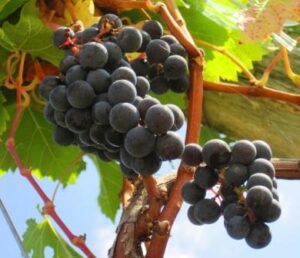
Learn everything about Cotes de Blaye Bordeaux, with a history of the Cotes de Blaye appellation, a look at the style and character of the wines, with detailed profiles on all the best wines, wineries, vineyards, and winemakers, with wine tasting notes, histories and buying guides for all the best Cotes de Blaye wines and vintages.
For a look at other, important Bordeaux value wine regions: Bordeaux Value Wine Appellation Guide
Cotes de Blaye is a massive wine-producing region with more than 6,600 hectares under vine. The appellation produces, for the most part, simple, easy-drinking red Bordeaux wine that is often enjoyed by the local French population. In total, 40 different communes make up the sizable appellation.
Close to 450 growers are active in the appellation. There are 3 Cooperatives. For the grape varietals planted, Merlot is king in the Cotes de Blaye appellation, followed by Cabernet Sauvignon. The region is also cultivated with a fairly large amount of Malbec in the vineyards.
Due to its large size, Cotes de Blaye features a wide and diverse array of terroirs and soils, that range from limestone and clay on the hillsides, to soils with more gravel, sand, and chalk at the bottom of the slopes and on the flats. With its diverse array of soils, Cotes de Blaye is able to produce both red and white Bordeaux wine.
The appellation is located next to the Cotes de Bourg appellation, and like its neighbor, Cotes de Blaye enjoys an extremely long and colorful history dating back to the ancient Romans, who planted vines in the region more than 2,000 years ago.
The strategic location made it the perfect location for station soldiers whose responsibility was to guard the local rivers.
After the ancient Romans, a large Citadelle was built in the 1600s by the leading, French military architect of the day, Sebastien Le Prestre de Vauban. The Vauban Citadelle was used to garrison the local troops. The tourist attraction has been declared a World Heritage UNESCO site.
However, the modern era for the Cotes de Blaye starts in 1936, when the AOC created the appellation. At that time, the area of Blaye was divided into three separate appellations, Blaye, Cotes de Blaye, and the best wines of the area, due to its more prestigious terroir was placed into a separate appellation, Premiers Cotes de Blaye.
In 2009, Cotes de Blaye, along with Cotes de Castillon and Cotes de Francs became part of the larger, and perforce, better-known Cotes de Bordeaux appellation.
The best vintages of the wines of Cotes de Blaye are: 2023, 2022, 2021, 2020, 2019, 2018, 2017, 2016, 2015, 2012, 2010, 2009, 2008, 2005, 2001 and 2000. Older vintages should have been consumed already.
The region of Cotes de Blaye makes a lot of forgettable, inexpensive wines. But there are some standout producers that are well worth seeking out as they offer value, style, and quality. Look for: Gigault Cuvee Viva, Les Grands Marechaux, Bel-Air la Royere, Perenne and Belle Coline.
Perhaps the most interesting wine from the appellation, or in thinking about it, unique is a better word comes from Dominique Leandre Chevalier. They produce Tricolore, which is made from 100% Petit Verdot that is planted with a vine density of 33,000 vines per hectare. The vines are all ungrafted, pre-phylloxera, making them some of the oldest vines in the appellation.
90% of Cotes de Blaye is devoted to the production of red Bordeaux wine. The production of wine in Cotes de Blaye can be roughly divided as follows, for red wine grape varietals, 5,773 hectares are reserved for making 2,975,000 cases of red Bordeaux wine, and 216 hectares are used to produce 115,000 cases of white Bordeaux wine.
For the red wine, Premiers Cotes de Blaye and Cotes de Blaye are mostly planted to Merlot, Cabernet Sauvignon, and Cabernet Franc. Although small plantings of Malbec, Petit Verdot, and Carmenere can also be found.
For the production of the white wine, the vineyards are planted to Sauvignon Blanc, Semillon, and other various grapes that are uncommon for Bordeaux, Ugni Blanc, Merlot Blanc, Folle Blanche, Colombard, and even Chenin Blanc. Colombard and Ugni Blanc are the two most popular, white wine grapes in the region.
Premiers Cotes de Blaye and Cotes de Blaye produce both red Bordeaux wine and white Bordeaux wine. Blaye is restricted solely to the production of red Bordeaux wine. The wines are labeled as coming from the Blaye AOC. That is not the same case for the white wines, however. White Bordeaux wine from the appellation is labeled as Cotes de Bordeaux Blaye.
For more information on the Cotes de Blaye appellation: www.vin-blaye.com
